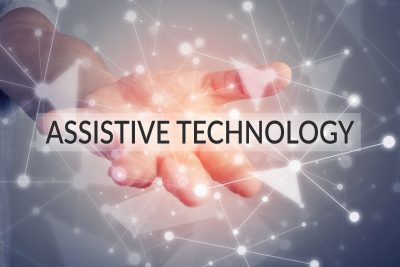If your child is eligible for special education or Section 504 accommodations, then the answer is “yes” if the assistive technology (AT) is necessary to achieve a “free and appropriate public education”.
Individuals with Disabilities Education Act, (IDEA), states “The Individualized Education Program, (IEP), team shall consider whether the child requires assistive technology devices and services”. The Washington State regulation (WAC 392-172A-02015) similarly states “each school district shall ensure that assistive technology devices or assistive technology services or both are made available to a student eligible for special education if required as part of the student’s: (a) Special education; (b) Related services; or (c) Supplementary aids and services.” These are strong mandates to use in advocating for inclusion of assistive technology in your child’s IEP.
What Kinds of Devices Do Schools Have to Provide? Both the State and Federal special education laws define assistive technology broadly to include a range of devices (from “off the shelf” to customize) and services. The inclusion of “services” is very important. Such services can include evaluation and training for both school staff and family members. Such training is often the key to successful use of the assistive technology. Some examples of AT could be: word processors, electronic communication devices, computers and printers, calculators, speech recognition software, print enlargement, text reading equipment, wheelchairs, electric scooters, etc.
How Do I Know What Kind of AT My Child Needs? Get an evaluation from a competent professional. If your school district does not have a staff person knowledgeable about AT, ask for an independent evaluation from the Office of the Superintendent of Public Instruction at the Special Education Technical Center or from another experienced AT evaluator. There are many devices available. Be open-minded. There may be more than one appropriate solution for your child’s needs. The most expensive device may not be the best match for your child. Such devices could be complicated and frustrating for the child, resulting in a total turn-off from technology. Try different types with the child to determine which meets the child’s needs appropriately. The device can be brought home if it is necessary to achieve a free and appropriate education as for example, when the child needs the device at home for homework and/or additional and supplementary training.
Does the School Have to Pay for Any Device – No Matter How Expensive? Not necessarily, the school is not required to buy the most expensive assistive technology if a more moderately priced device will work to achieve a free and appropriate education. The school’s obligation is to “provide” assistive technology from their own inventory or an outside source and it cannot ask you to contribute. If the device is paid for by the school district, the district maintains ownership of it.
What Will Happen to the Child’s AT When the Child Graduates or Leaves the District for Another Reason? Because the district owns the equipment, the district keeps it unless you can convince the district to sell it to you, or the next program, at its depreciated value. Planning for your child’s transition to post-secondary education, training, or directly to work is also a critical part of the process. Deciding future AT needs prior to that transition is critical. To help ensure a successful transition after high school, planning must begin by at least 16 years of age.
This may include information on State or Federal laws regarding the rights of individuals with disabilities. While this is provided to inform or make one aware of these rights, legal definitions, or laws/regulations, it is not providing legal representation or legal advice. The participant understands that this is information to educate them not to provide them with legal representation

